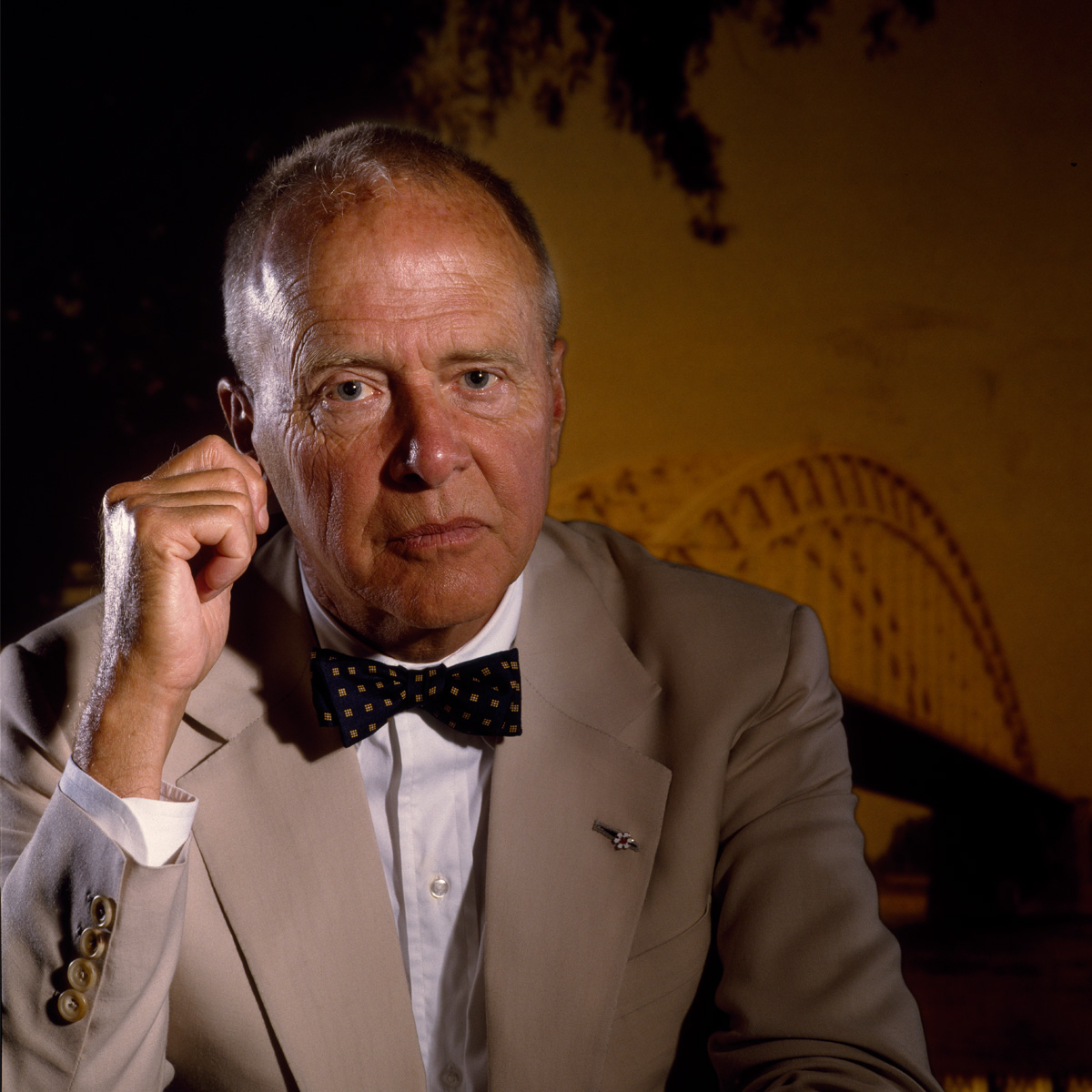Master Artist
Nova Scotia has been home to almost as many artists as there are stars in the sky. In our earthly constellation, one painter and print-maker — Alex Colville — has so far achieved the greatest international recognition. Around the world, from the 1960s onward, Colville's distinctive art work became widely known and highly prized.
David Alexander Colville was born in Toronto, yet spent much of his childhood in Nova Scotia after his family moved to Amherst. When it came time to go to university, he selected nearby Mount Allison, from which he graduated with a fine arts degree. In 1942, in the middle of the Second World War, Alex married Rhoda Wright and enlisted in the Canadian army. Two years later, his artistic talent saw him appointed an official war artist. His experiences in that capacity, depicting battlefields and a concentration camp, would be major influences on him and his art throughout his life. His work would often be described as magic realism, with an emphasis on ambiguity and foreboding as viewers wrestle with what seems to lie beneath everyday appearances.
After the war, Colville taught in the Fine Arts Department at Mount Allison University from 1946 to 1963, at which point he devoted himself fulltime to painting and print-making. National and international acclaim followed as his oeuvre increased. In 1965, the Canadian government commissioned him to design the coins for Canada's Centennial. In 1966, Colville was one of three artists picked to represent Canada at the Venice Biennale. It was in 1973 that Alex and Rhoda moved to Nova Scotia fulltime, to her hometown of Wolfville. For the next four decades, Colville turned out art that provoked thoughtful discussion and delighted collectors worldwide.
At the same time as he was a major artist on the international stage, Alex Colville was rooted in Kings County, including serving as the chancellor of Acadia University from 1981 to 1991.
